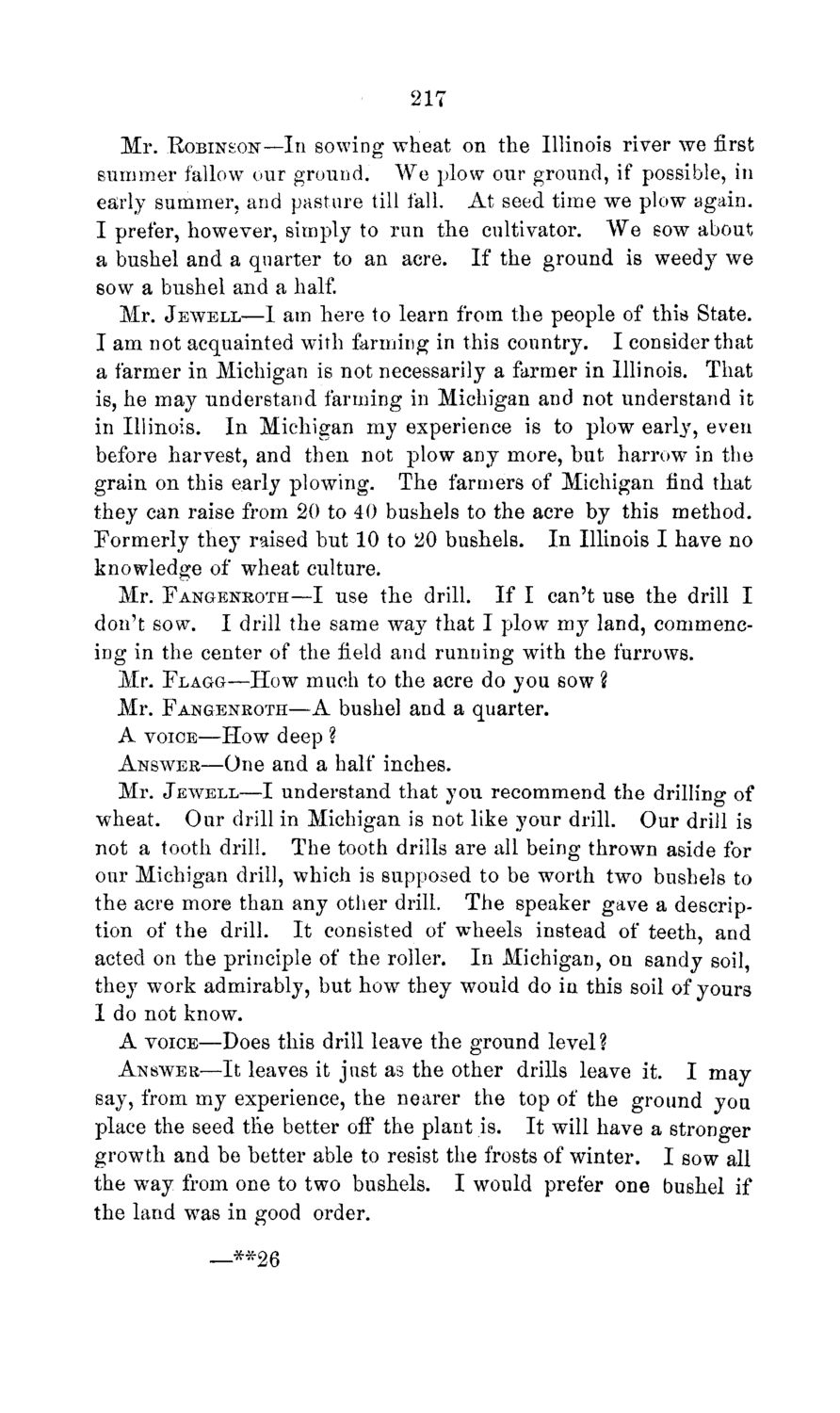| |
| |
Caption: Board of Trustees Minutes - 1869
This is a reduced-resolution page image for fast online browsing.

EXTRACTED TEXT FROM PAGE:
217 Mr. ROBINSON—In sowing wheat on the Illinois river we first summer fallow our ground. We plow our ground, if possible, in early summer, and pasture till fall. At seed time we plow again. I prefer, however, simply to run the cultivator. We sow about a bushel and a quarter to an acre. If the ground is weedy we sow a bushel and a half. Mr. JEWELL—I am here to learn from the people of this State. I am not acquainted with farming in this country. I consider that a farmer in Michigan is not necessarily a farmer in Illinois. That is, he may understand farming in Michigan and not understand it in Illinois. In Michigan my experience is to plow early, even before harvest, and then not plow any more, but harrow in the grain on this early plowing. The farmers of Michigan find that they can raise from 20 to 40 bushels to the acre by this method. Formerly they raised but 10 to 20 bushels. In Illinois I have no knowledge of wheat culture. Mr. FANGENROTH—I use the drill. If I can't use the drill I don't sow. I drill the same way that I plow my land, commencing in the center of the field and running with the furrows. Mr. FLAGG—How much to the acre do you sow % Mr. FANGENROTH—A bushel and a quarter. A VOICE—How deep ? ANSWER—One and a half inches. Mr. JEWELL—I understand that you recommend the drilling of wheat. Our drill in Michigan is not like your drill. Our drill is not a tooth drill. The tooth drills are all being thrown aside for our Michigan drill, which is supposed to be worth two bushels to the acre more than any other drill. The speaker gave a description of the drill. I t consisted of wheels instead of teeth, and acted on the principle of the roller. In Michigan, on sandy soil, they work admirably, but how they would do in this soil of yours 1 do not know. A VOICE—Does this drill leave the ground level? ANSWER—It leaves it just as the other drills leave it. I may say, from my experience, the nearer the top of the ground you place the seed the better off the plant is. It will have a stronger growth and be better able to resist the frosts of winter. I sow all the way from one to two bushels. I would prefer one bushel if the land was in good order. —**26
| |